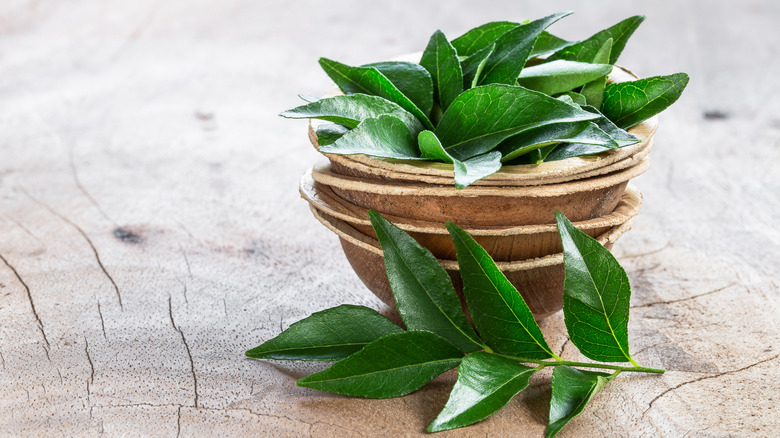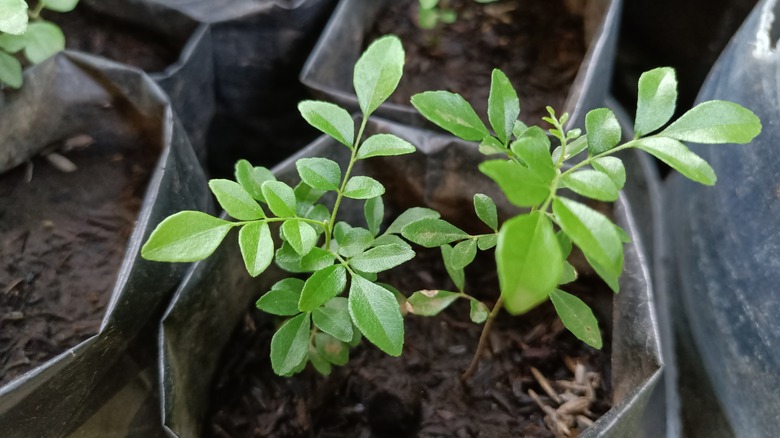Tricks For Pruning Curry Leaf For A Thriving Plant & Bigger Harvest
Growing curry leaves can be rewarding for those wonderful people who possess both a green thumb and culinary skills. Not to be confused with curry powders, the curry leaf tree (Murraya koenigii) is used in many popular Indian and Southeast Asian dishes. Unless you live in a tropical climate, it's best to grow Murraya koenigii in a container that you can bring inside in the winter. As the name suggests, the curry leaf tree will grow tall if happy and left unpruned, even when grown in a pot.
While determining what herbs will grow the best in your kitchen, you should keep in mind how often this culinary prize likes to be harvested and pruned before planting it. Cutting the main stem and new growth at the right time will encourage more leaves. Here are some tips to keep in mind when pruning your curry leaf tree that will encourage a full, healthy plant and bigger harvest.
Caring for the curry leaf tree
Pruning can help maintain the plant size and encourage new growth if done the right way. If you are familiar with how to deadhead salvia in the summer, then pruning Murraya koenigii will be kind of similar. When the main stem of a young curry leaf tree is about a foot tall, snip off the top 3 to 4 inches above a node. Similar to how two new flower spikes will bloom from a cut on salvia, more stems will sprout from the main stem of the tree. Cutting the main stem like this also keeps the tree from outgrowing your needs.
In addition, you can prune the tips of new stems once they are about 6 inches long to stimulate growth for a bushier plant. A common rule of thumb is the 1/3 pruning rule, which says to never cut off more than one-third of the plant at a time, so you will have to space out some of your maintenance. Discarding damaged and crossing branches is best done in early spring.
To care for your curry leaf tree, you can treat it like a tropical houseplant by using potting mix and a pot with a drainage hole. It's important to water them well but to let the soil dry out between waterings to prevent root rot. If you can put them outside in a sunny place that is protected from strong wind, they will be happy.

